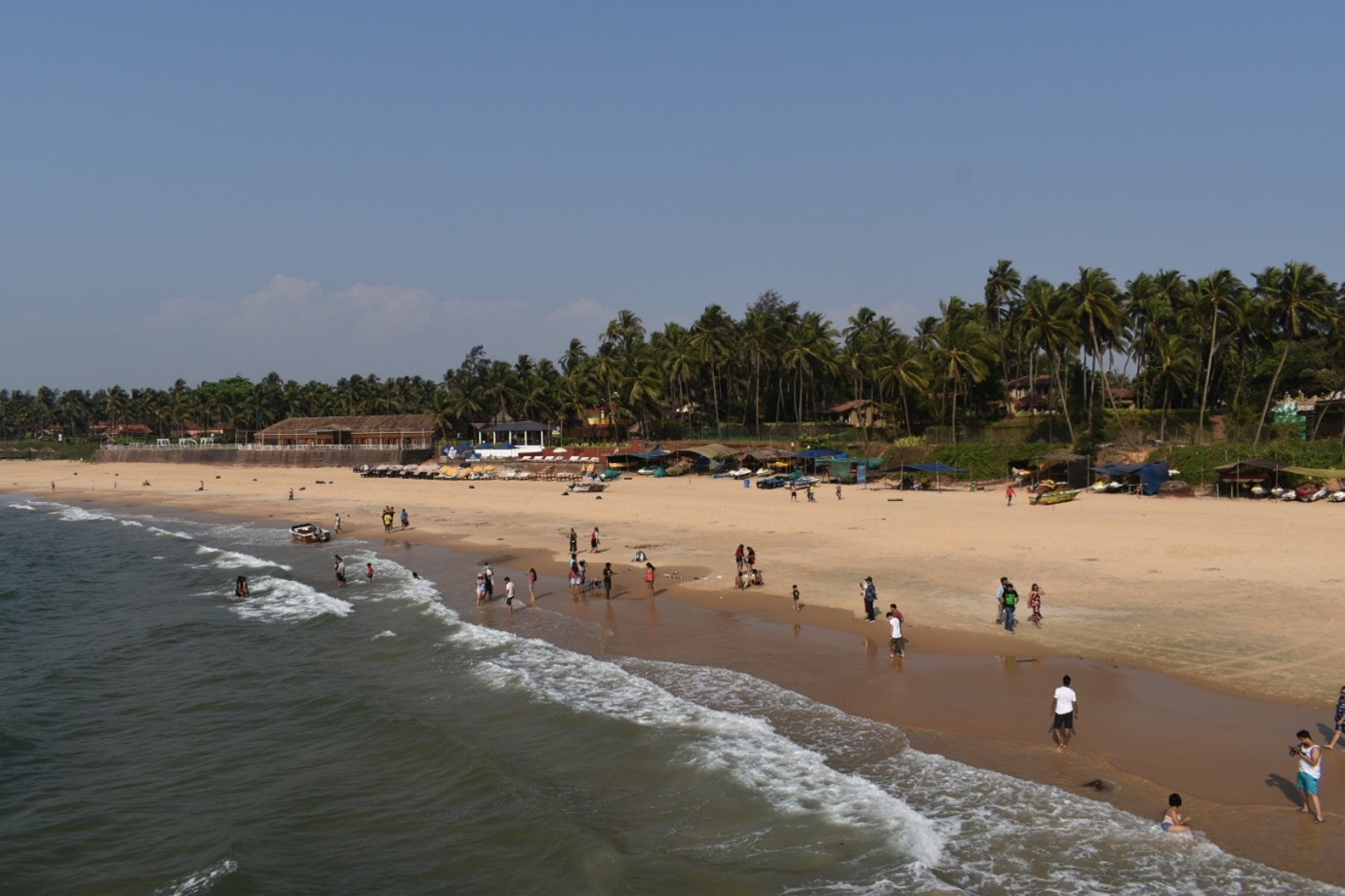
Challenge
Goa’s tourism-driven, emissions-intensive growth, marked by high per capita electricity use, collides with coastal erosion, floods, heat stress, and scarce financing, threatening long-term sustainability and climate resilience.
Solution
The state’s Low-Carbon, Climate-Resilient Development (LCRD) pathway targets 100% renewable electricity, blue carbon restoration, and coastal resilience, financed through an innovative blended finance facility.
Overview
Goa, India’s smallest coastal state, bears a disproportionate environmental footprint. With just 1.5 million residents but nearly 10 million tourists annually, its energy and resource consumption far exceed its size. Per capita electricity use is almost three times the national average, vehicle ownership is 4.5 times higher, and over 96% of electricity is imported from other Indian states, predominantly generated by thermal power. Tourism compounds this burden through energy-intensive hotels, transport, and waste. If unchecked, greenhouse gas emissions will nearly double, from 4.5 MtCO₂e in 2020 to 8 MtCO₂e by 2050, with transport contributing over 60% of the same.
High Net Emissions in the State
Goa’s sustained prosperity rests on a steep environmental cost. Power imports from coal-based plants, industry relies on coal, and agriculture and fisheries depend heavily on diesel. Without intervention, emissions under a Business-as-Usual (BAU) pathway will surge. To address this, Goa has designed its Clean Energy Roadmap aiming for 100% renewable electricity by 2050. Measures include rooftop and floating solar, offshore wind, agro-photovoltaics, biomass, and bulk renewable procurement. On the demand side, the state targets complete EV adoption for commercial and tourist vehicles, electrification of ferries and fishing fleets, solar irrigation pumps, and biofuel blending. Industry is proposed to be decarbonized through hybrid renewables, green hydrogen, and circular economy practices. Given land constraints, nature-based adaptation plays a crucial role, with mangrove expansion, agroforestry, and blue carbon ecosystems as cost-effective abatement levers.
Climate Change Impacts
Goa’s vulnerability stems from its geography as a small coastal state. Around 23% of its 105 km shoreline is erosion-prone, while floods threaten 19% of the population, 55% of rural roads, 80% of railways, and both airports. Rising land surface temperatures and erratic rainfall reduce agricultural productivity; cashew yields have already fallen 50–60%. Groundwater extraction has risen by 90%, intensifying salinity intrusion, while mangroves and estuaries remain under stress.
Methodology for Solutions
These solutions were developed through a rigorous three-step methodology: mapping current economic and emissions trends, projecting land-use change with PLUS (Patch Generating Land Use Simulation), and estimating sequestration potential utilizing InVEST model (Integrated Valuation of Ecosystem Services and Tradeoffs) under Business-as-Usual, Economic Development, and Sustainable Development scenarios. The Sustainable Development scenario was found to best balance growth with resilience, sequestering 5–7% of future emissions through targeted land use and ecosystem restoration.
Adaptation planning has been done based on the scenario analysis of disaster potentials and climate vulnerability of Goa.
Finally, planning for blended finance facilities has been done based on the mitigation and adaptation needs and costs associated with them. Total financing of climate mitigation, adaptation and disaster resilience was split between private, public and other public-private partnership category based on the risk return profiles of each of the project categories.
Adaptation Planning
Adaptation strategies combine engineered and ecosystem and nature based solutions. Coastal protection includes seawalls and dykes alongside mangrove and seagrass restoration. Inland, flood resilience is enhanced by safeguarding floodplains, riverine flows, and wetlands. Urban resilience is strengthened through sponge-city designs, permeable pavements, green roofs, and improved drainage. Agriculture support includes climate-resilient crop varieties, agroforestry, livestock insurance, and natural farming. Communities are engaged through climate insurance, awareness campaigns, skill development, and Climate Town Halls to enable proactive adaptation.
Financing and Way Ahead
The transition will require substantial resources. By 2030, it has been estimated that the State of Goa may need around 5 billion USD to meet its climate mitigation, adaptation and disaster resilience targets and to achieve the goal of climate resilient sustainable development pathway. To provide the necessary access to the financial resources it has been proposed to establish a Blended Finance Facility, potentially registered as an Alternative Investment Fund (AIF) in GIFT City, pooling concessional and commercial capital. By offering instruments such as guarantees, concessional loans, and performance-linked finance, the facility aims to de-risk investments and mobilize up to ten times more private capital.
Looking ahead, Goa’s Low-Carbon and Climate Resilient Development (LCRD) Pathway underscores the importance of pairing mitigation with adaptation, anchored by innovative finance. Immediate priorities include expanding blue carbon ecosystems, scaling EV adoption, mainstreaming rooftop solar, and investing in agroforestry. By aligning planning, finance, and community participation, Goa needs to position itself not only to safeguard its people and ecosystems but also to serve as a replicable model for other coastal regions confronting the dual crises of emissions and vulnerability.
Project Details
| Project title | Enabling Low-Carbon and Climate Resilient Development in Goa |
| Year started | 2024 |
| Duration | 1.5 years |
| Countries involved | India |
| Funded by | World Bank |
| Project leader | Dr Anindya Bhattacharya, Executive Director, The Celestial Earth |
Acknowledgements
We gratefully acknowledge The Celestial Earth team for conducting this project and for their generous collaboration in publishing it as a case study in the Adaptation Database. We also thank the World Bank for its invaluable financial support, which made this project possible.
Related Information
- The Celestial Earth website
- Goa Energy Development Agency (GEDA): Clean Energy Roadmap for the state of Goa
- Press release: Government of Goa and Power Finance Corporation come together to pioneer subnational Blended Finance Facility for Climate Action
- World Bank Group: India Climate and Development Partners' Meet, February 2024
KEYWORDS
- # Case Study
- # Asia
- # India
- # Adaptation Action/Implementation
- # Adaptation Planning/Policy
- # Climate Mitigation Co-Benefits
- # Climate Projection
- # Disaster Prevention/Disaster Mitigation
- # Impact Assessment/Risk Assessment
- # Nature-based Solutions
- # Biodiversity/Ecosystem
- # Coastal Areas
- # Energy
- # Fisheries
- # Forests/Forestry
- # Local Communities
- # Natural Disasters
- # Tourism